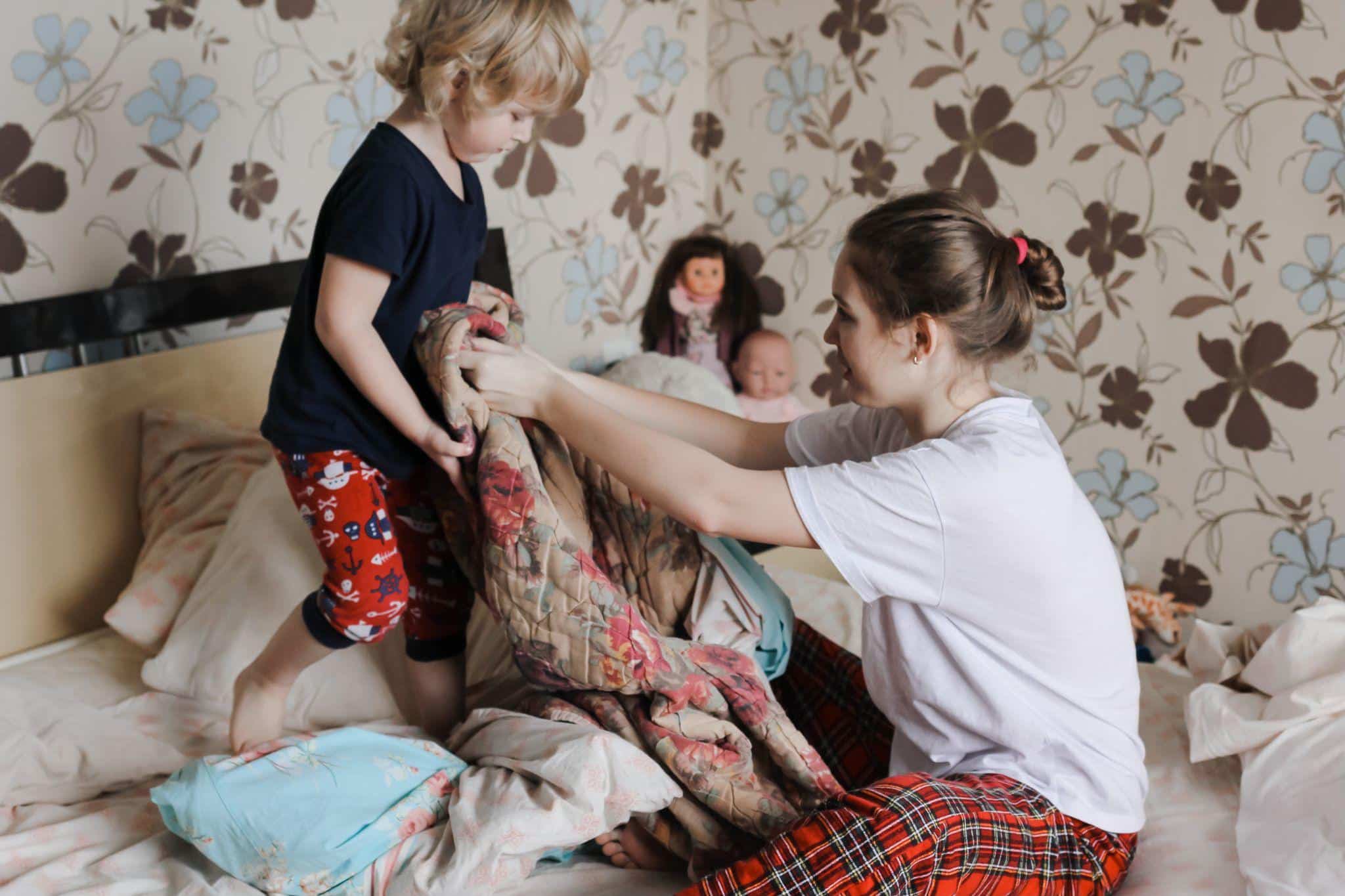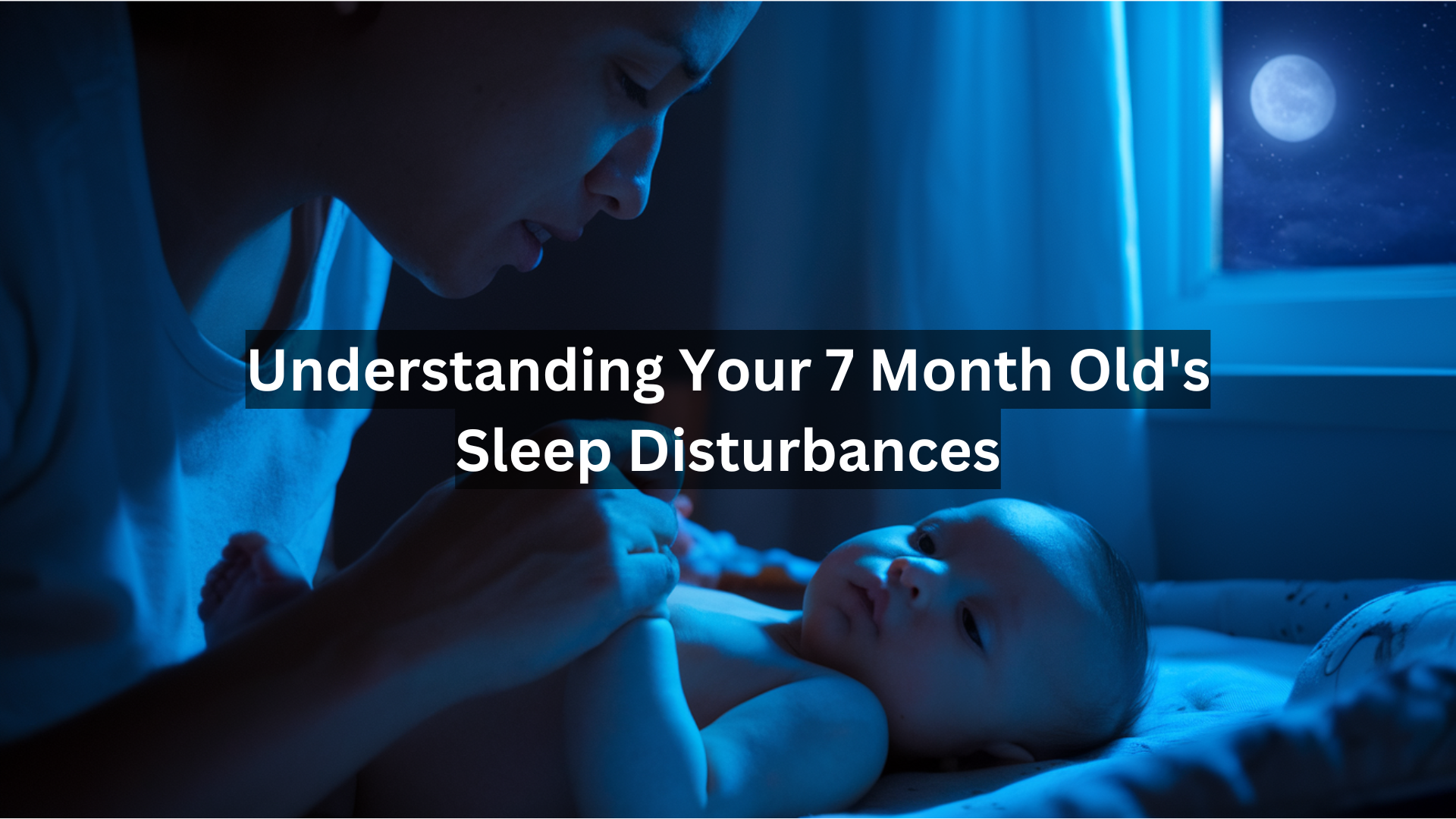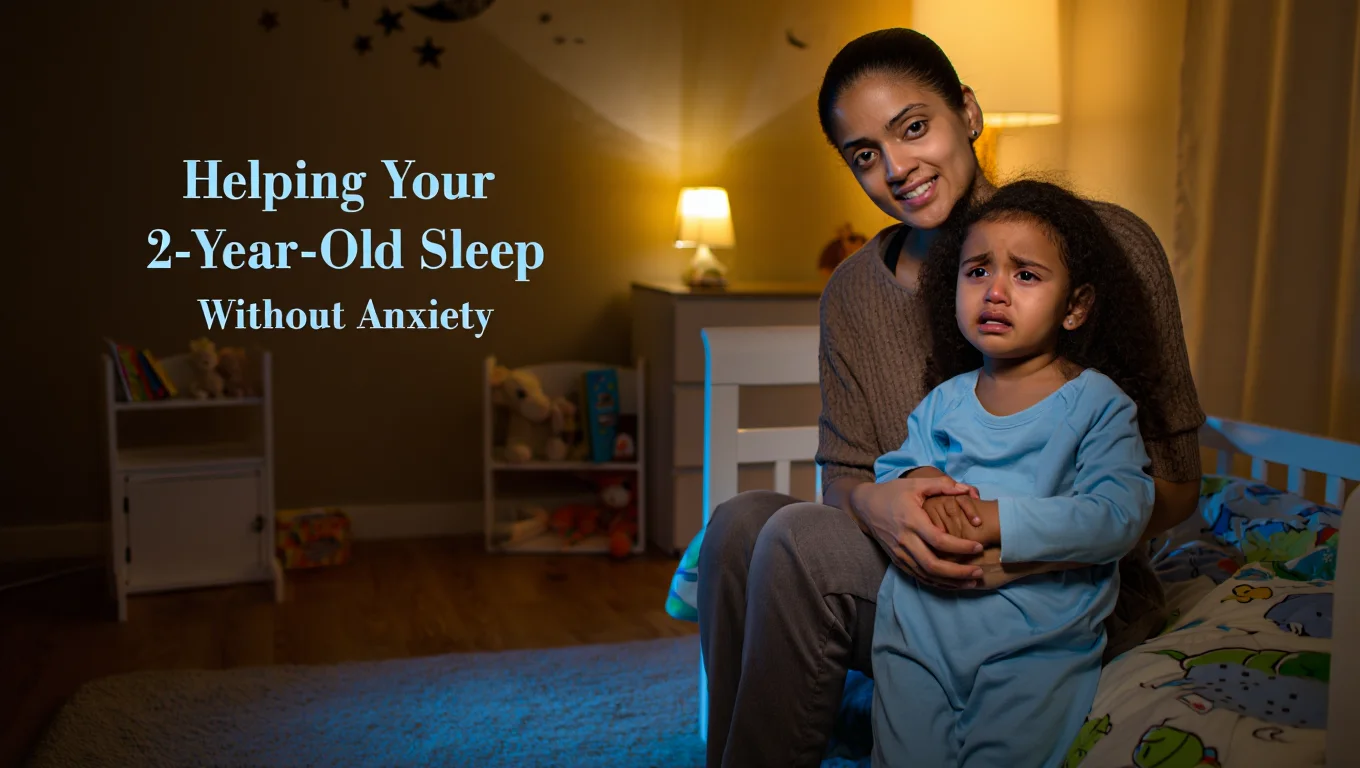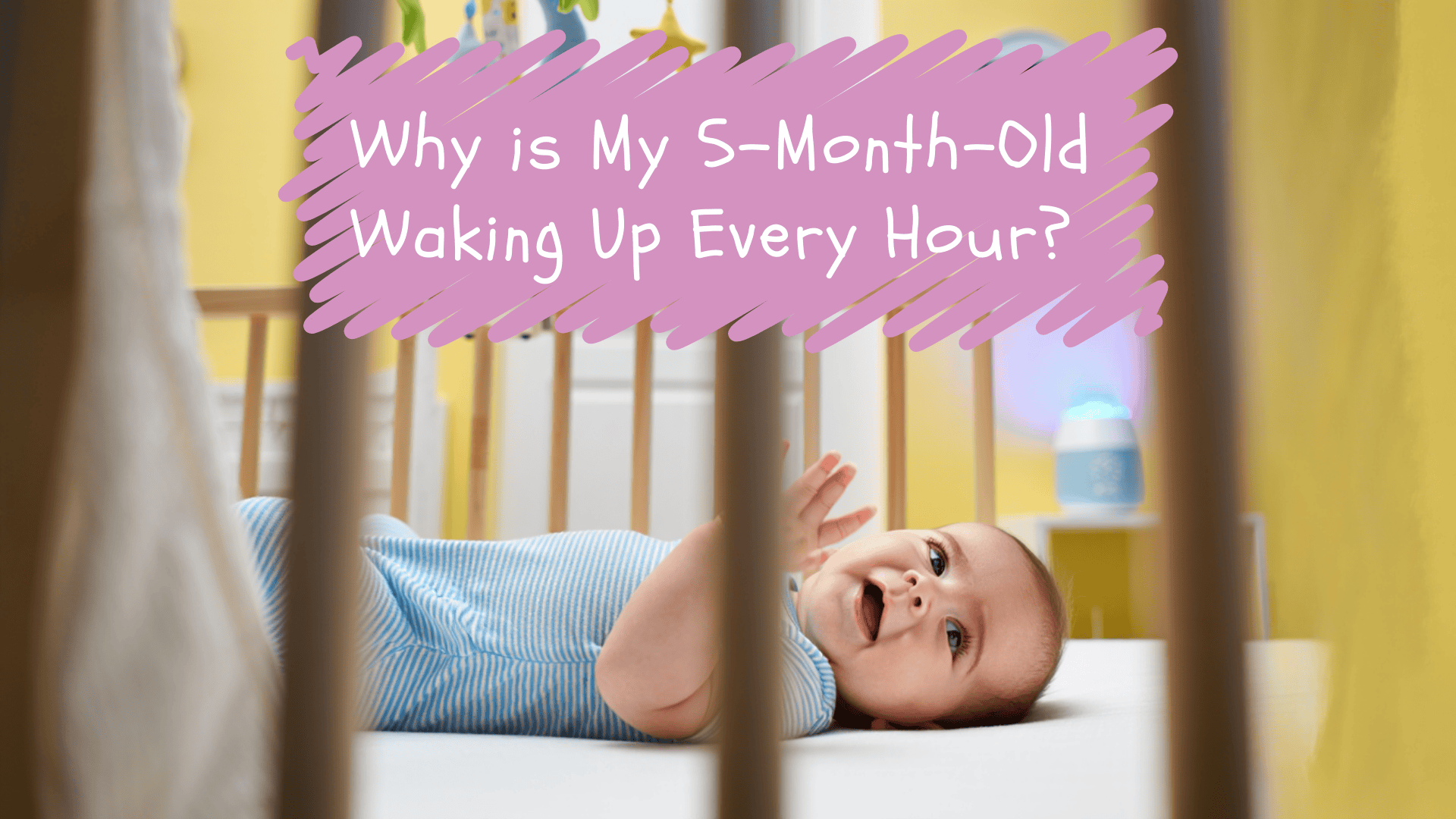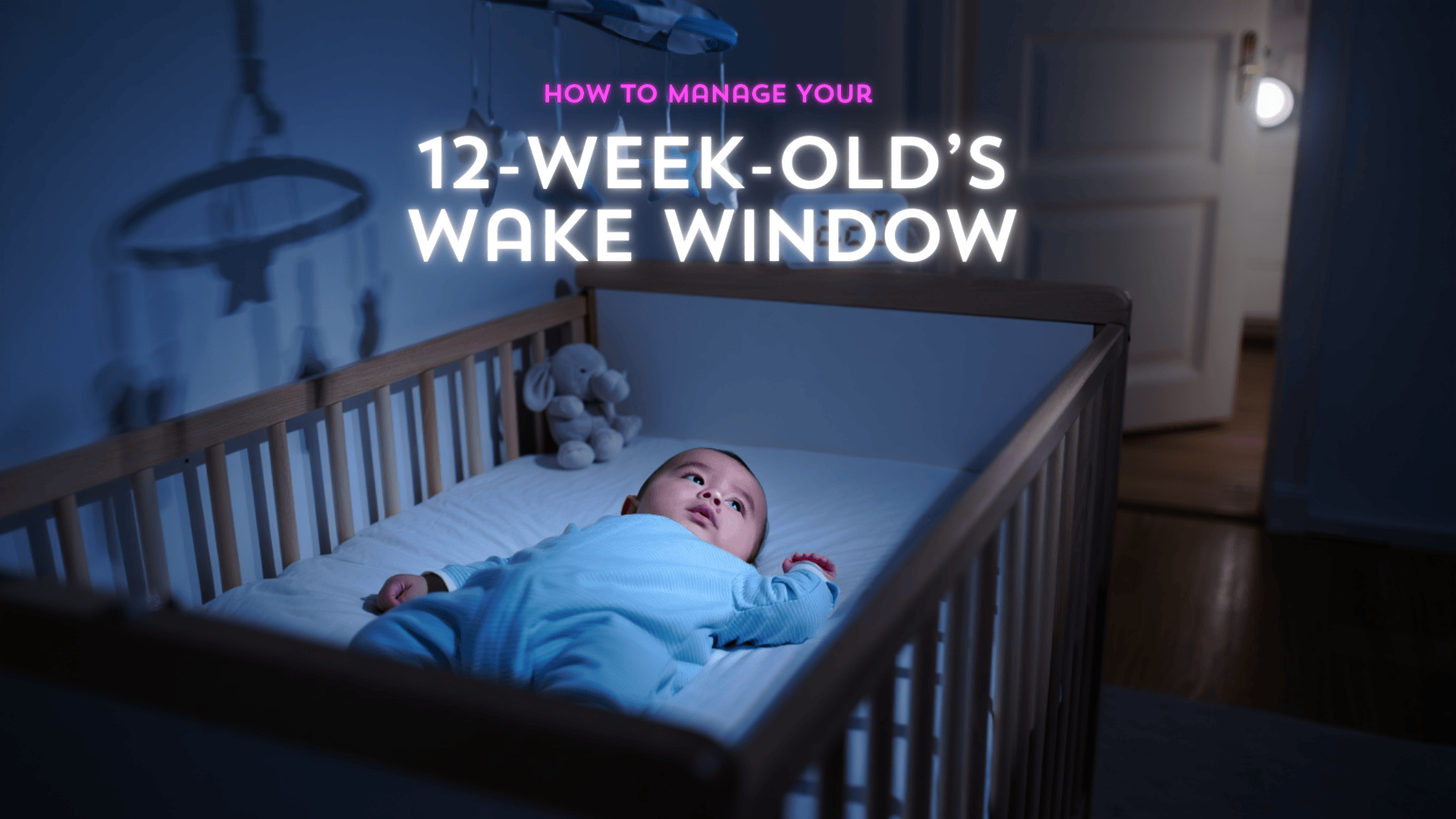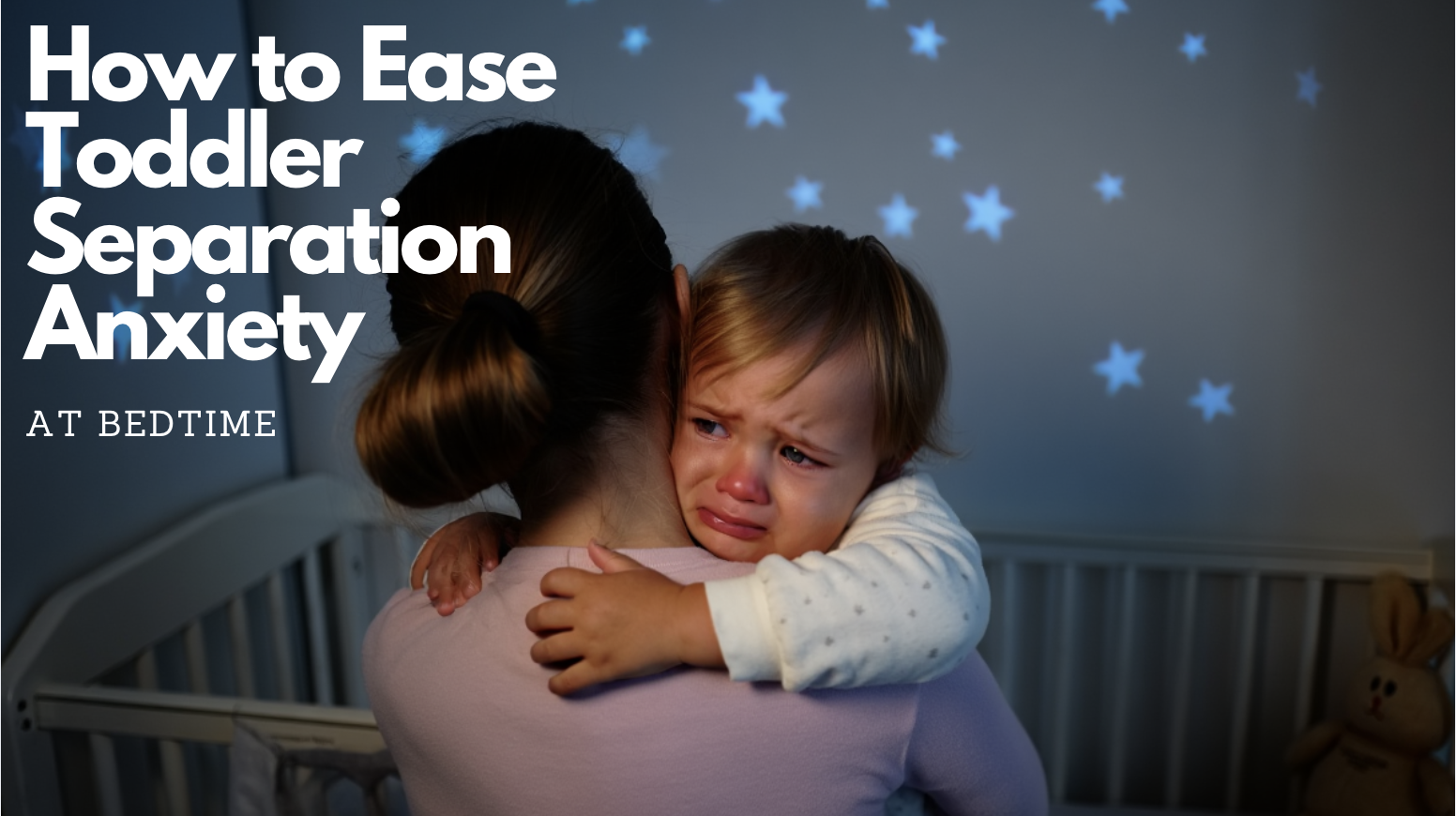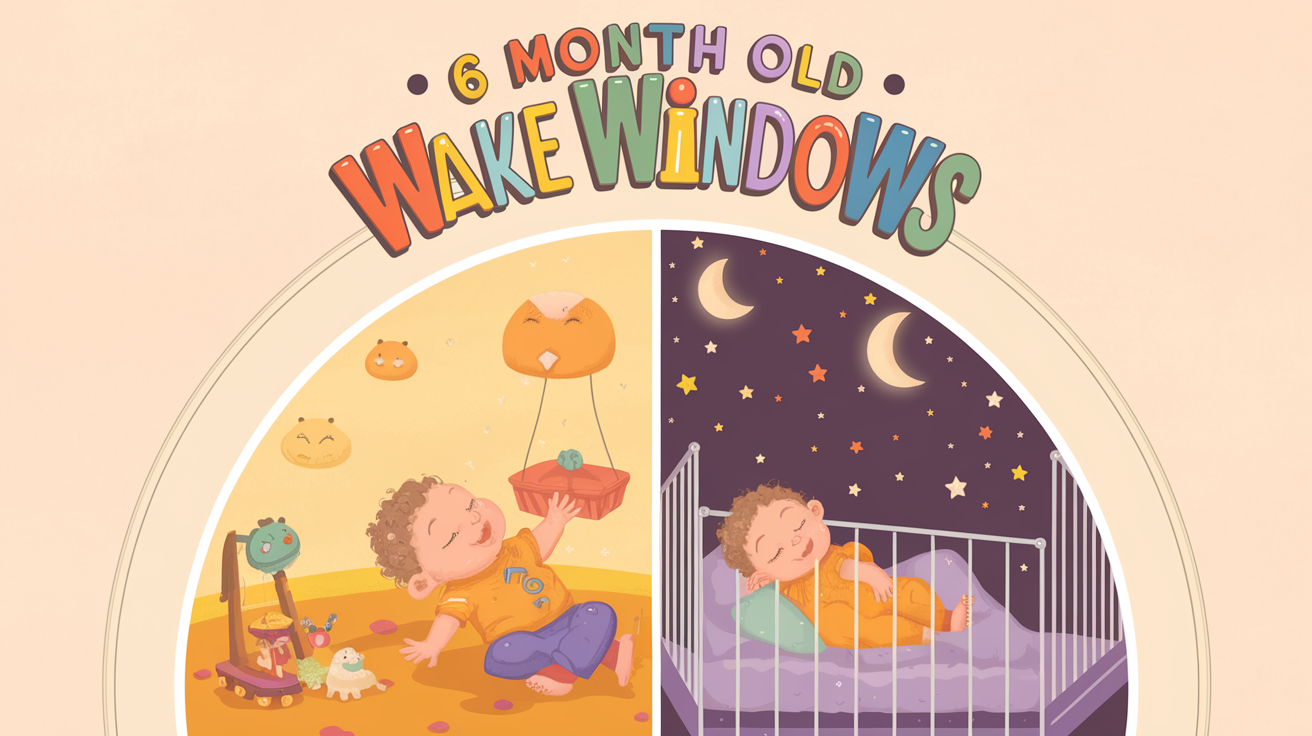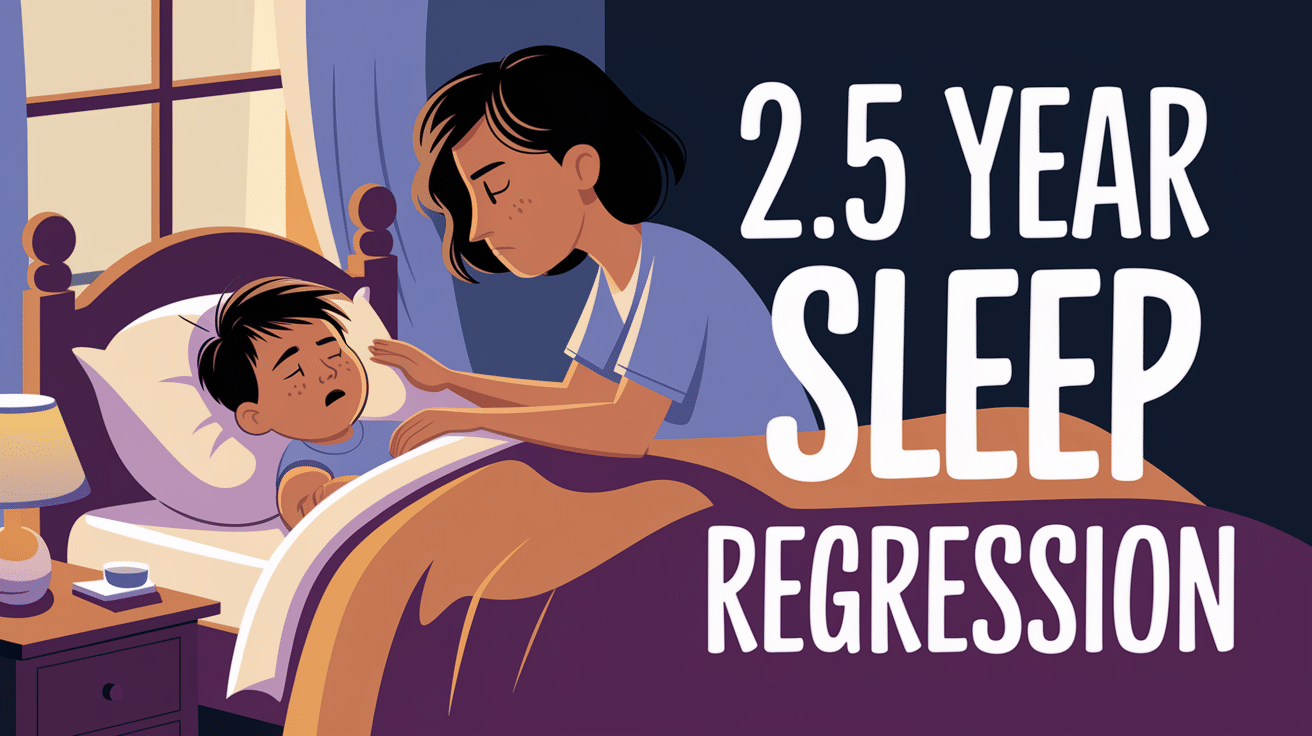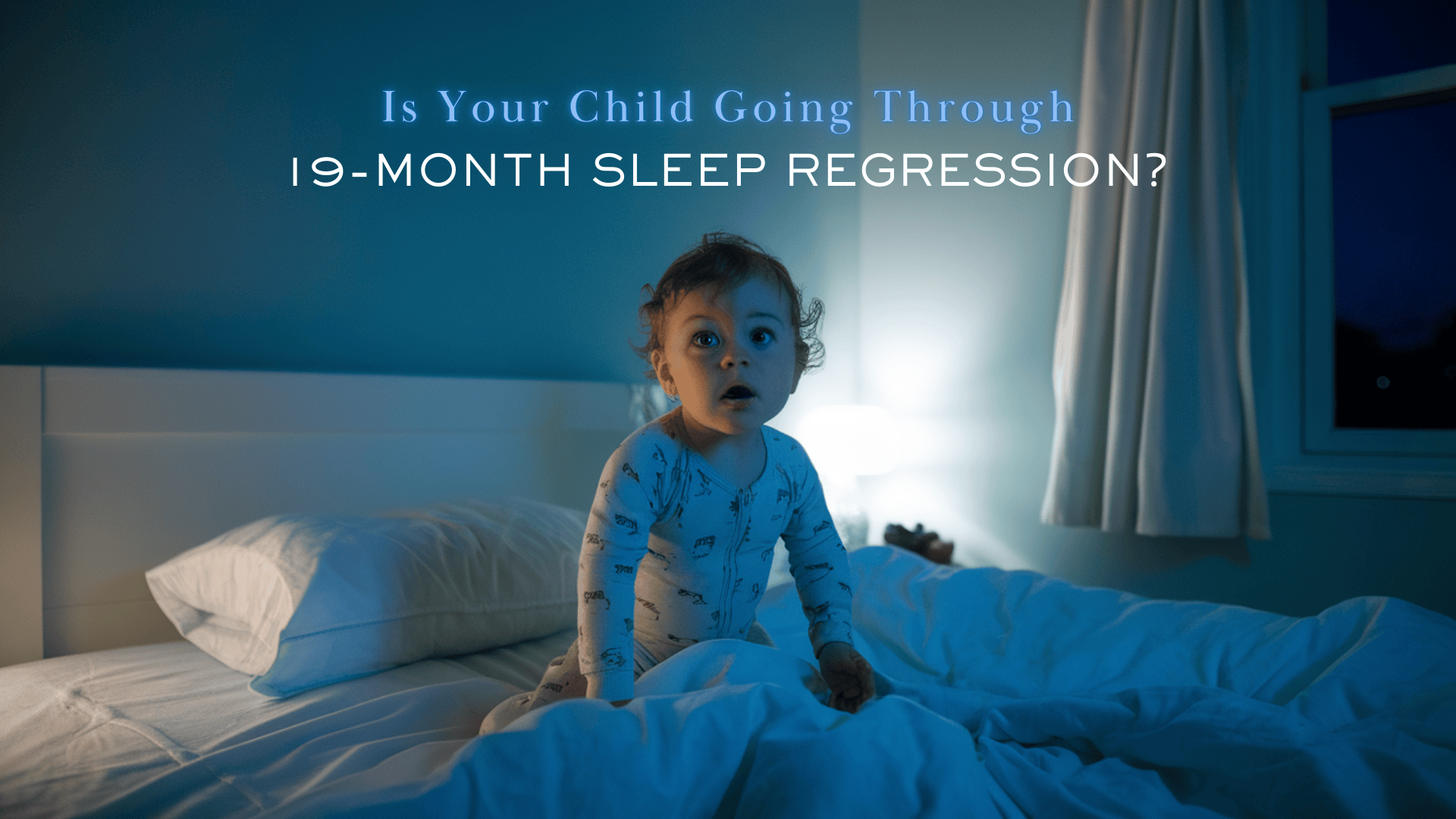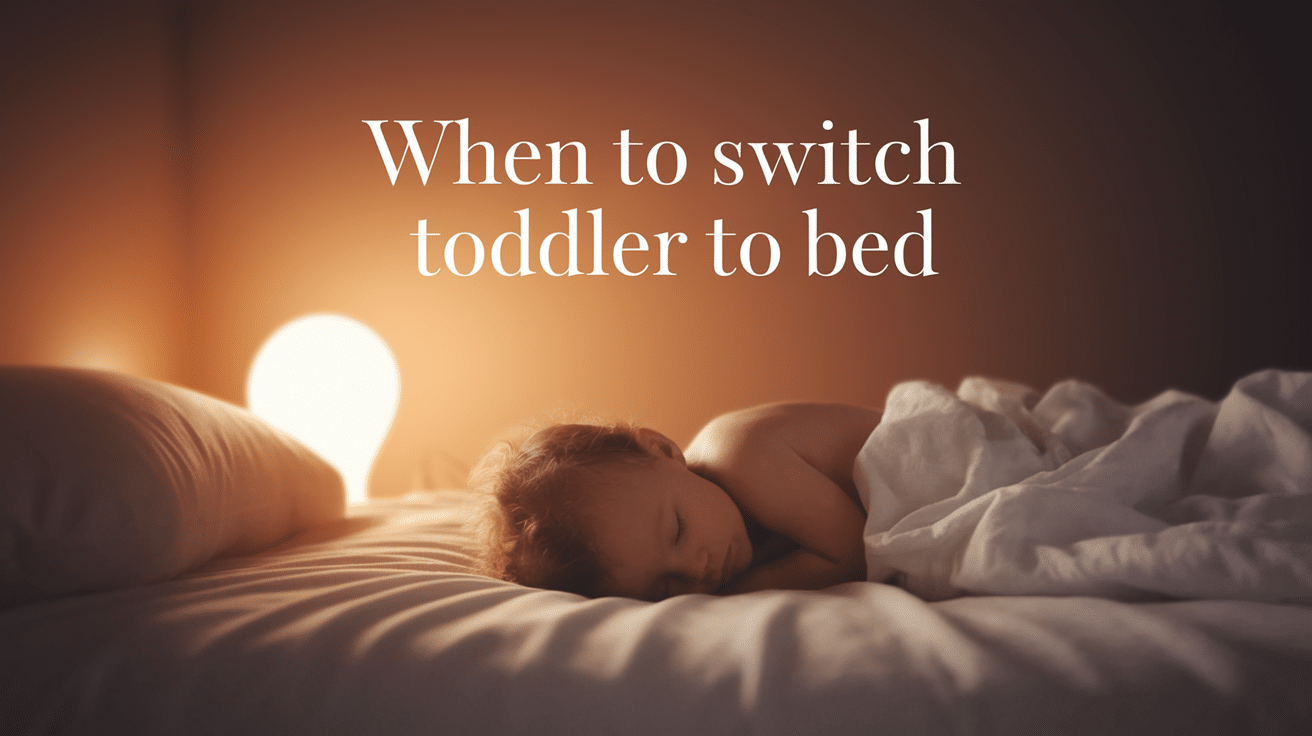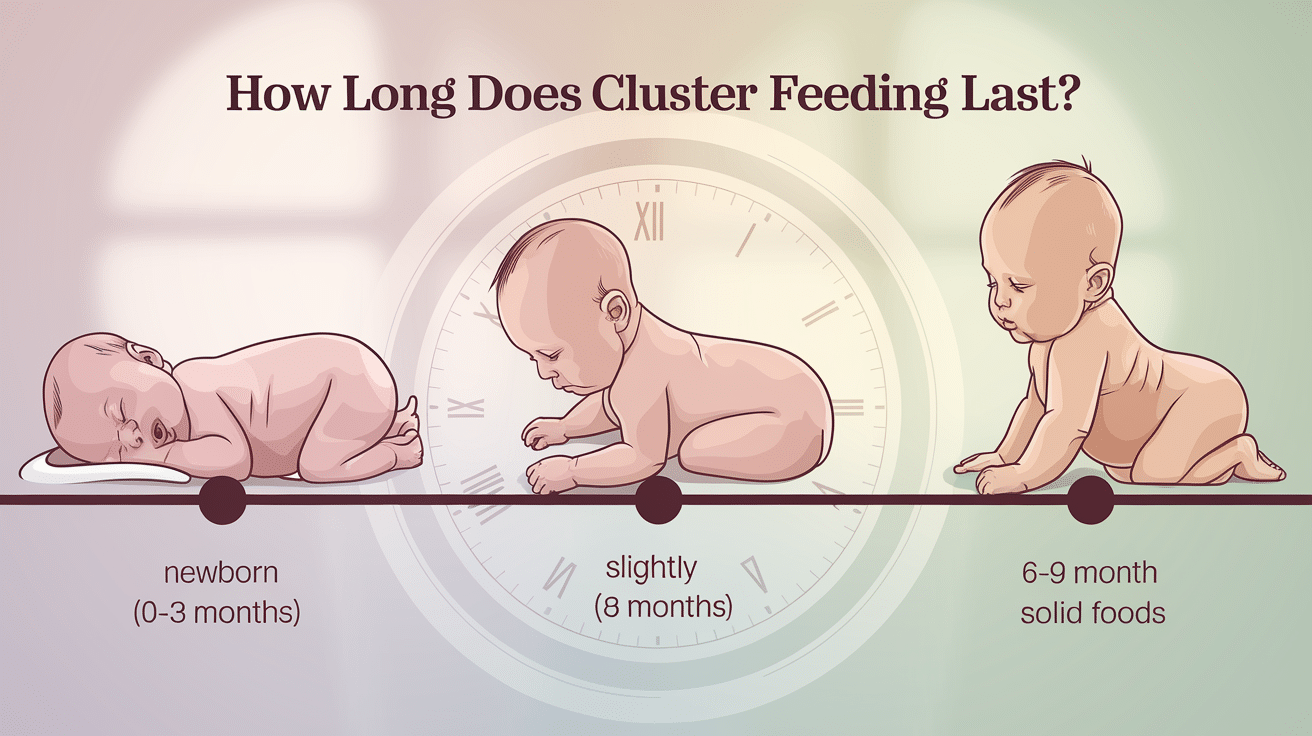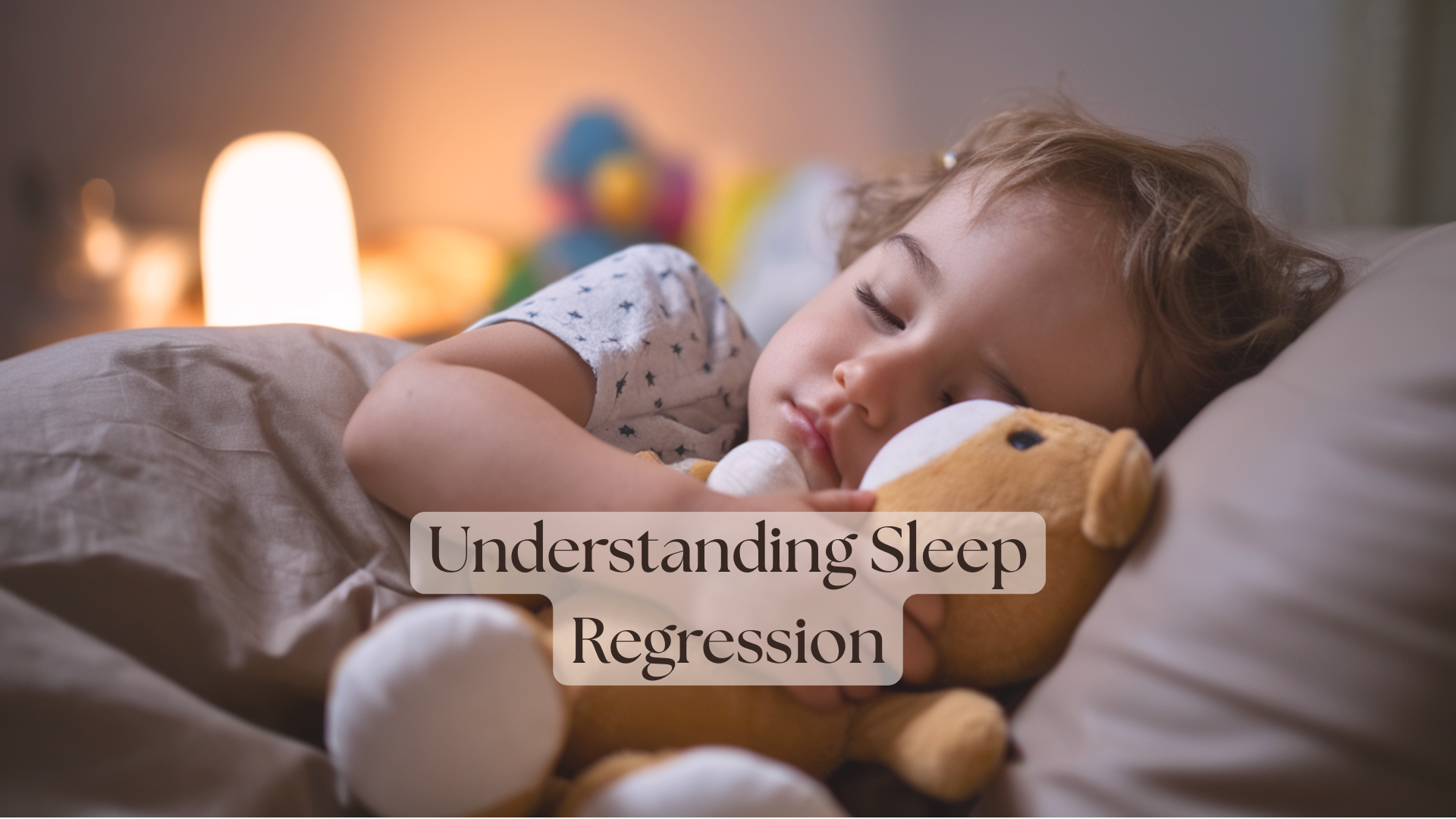
When you thought you’d mastered your toddler’s sleep schedule, the dreaded 2-year sleep regression hits.
Suddenly, your once-peaceful sleeper is fighting bedtime like it’s their job, waking frequently, or staging midnight protests in your bedroom.
You’re not alone. According to the American Academy of Pediatrics, nearly 40% of toddlers experience sleep disruptions around their second birthday. This developmental phase, while challenging, is completely normal.
“Is this the end of peaceful nights?” you wonder, bleary-eyed at 3 AM.
Not at all! While your toddler’s newfound independence, language explosion, and vivid imagination are perfect ingredients for sleep challenges, this regression is temporary.
Let’s explore what’s really happening during the 2-year sleep regression, how to recognize the signs, and most importantly, how to survive it without losing your sanity.
What Is the 2-Year Sleep Regression?
Sleep regression at age two happens when your good sleeper suddenly stops sleeping well. Your toddler might fight bedtime, wake up more at night, or refuse naps they once took happily.
I’ve seen this with countless families – their little ones go from sleeping 10-12 hours straight to waking up crying several times each night. It can feel like you’ve gone back in time to the newborn days.
This change in sleep patterns usually shows up as:
• Formerly cooperative toddlers suddenly resist bedtime with dramatic protests, tears, and repeated requests for “one more” story, drink, or hug.
• Your once-solid sleeper now wakes frequently during the night, calls out for parents, or even appears in your bedroom unannounced.
• Daytime sleep becomes a battlefield as your toddler fights naps they previously enjoyed, leading to overtired behavior by evening.
• The 5 AM wake-up call becomes your new normal, with a wide-awake toddler ready to start the day while you’re still desperate for sleep.
Rest assured, this sleep regression isn’t due to your parenting but is a normal developmental phase many toddlers experience that typically resolves within 2 and 6 weeks.
With consistent routines and patience, you’ll both navigate through this temporary challenge and return to peaceful nights soon.
Spotting the Signs: Common 2-Year Sleep Regression Symptoms

Around age two, many children experience a sleep regression that can leave parents feeling exhausted and confused. These are the most common signs to watch for:
1. Sudden Sleep Disruptions
Your toddler, who once slept soundly through the night, might now wake up crying multiple times. Many parents have told me that these wakings seem to come out of nowhere.
One week your child sleeps well, and the next week they’re up every few hours. This sudden change is often your first clue that sleep regression has arrived.
2. Bedtime Battles
Bedtime can be a struggle. Your child might cry, repeatedly request water or stories, leave their room, or flat-out refuse to get in bed.
What used to take 15 minutes now stretches to an hour or more. The once peaceful bedtime routine turns into an exhausting nightly challenge.
3. Nap Resistance
Many two-year-olds start fighting their daytime naps. They might play in their crib instead of sleeping, cry when you try to put them down, or skip naps entirely.
Some children are truly ready to stop taking naps around this age, while others still need them but resist due to regression.
4. Increased Fussiness
Have you noticed your normally happy child seems cranky or irritable during the day? This is a common sign of sleep regression.
When toddlers don’t get enough rest, they often can’t regulate their emotions well. The lack of quality sleep affects their mood and behavior throughout the day.
5. Early Morning Wake-ups
Your toddler might start waking up at 4:30 or 5:00 AM, ready to start the day. These early risers can be especially tough on parents who need more sleep. Unlike night wakings, your child often seems fully awake and difficult to settle back to sleep.
6. Regression vs. Other Issues
How can you tell if it’s truly sleep regression? Look at timing and other symptoms. If your child also has a fever, unusual cough, or seems to be in pain, it could be an illness or teething causing sleep troubles.
Sleep regression tends to come on suddenly when your child is otherwise healthy and often coincides with new developmental skills they’re mastering.
I always recommend checking with your pediatrician if you’re unsure or if sleep problems persist beyond a few weeks. They can rule out any medical issues that might be affecting your child’s sleep.
What Triggers the 2-Year Sleep Regression?

1. Brain Development
Your toddler’s brain is growing at an amazing rate around age two. I’ve seen how this mental growth affects sleep patterns in nearly every child.
Their brains are busy processing new skills and information even during sleep time. This mental activity can wake them up or make it harder to stay asleep.
When your child is learning lots of new words or figuring out puzzles during the day, their brain keeps working on these skills at night.
2. Growing Independence
Two-year-olds start to understand that they are separate from their parents. They want to make their own choices and test boundaries.
This shows up clearly at bedtime when they might suddenly refuse to follow the usual routine. “No bed!” becomes a favorite phrase. Your child isn’t being difficult on purpose—they’re practicing their newfound sense of control.
3. Separation Anxiety
Many toddlers go through a phase of separation anxiety around this age. Being apart from you becomes scary, especially at night in a dark room.
Your child might cry when you leave their room or wake up in a panic when they realize you’re not there. This fear is very real to them, even if the room is the same safe space it’s always been.
4. Big Life Changes
Has your family recently moved? Started a new daycare? Welcomed a new baby? Any change in routine can upset a toddler’s sleep.
Even positive changes, like a new big-kid bed, can trigger sleep problems. Toddlers thrive on sameness and predictability, so changes that seem small to us can feel huge to them.
5. Language Explosion
Many children experience a major increase in vocabulary around age two. Words that were locked in their heads suddenly have a way out.
This language growth is exciting but can interfere with sleep as their brains work overtime. Some parents tell me their children actually talk in their sleep during this phase!
Soothing Solutions for Sleep Regression Symptoms

1. Stick to A Consistent Bedtime Routine
I’ve found that a steady, calming bedtime routine works wonders during sleep regression. Your child feels safe when they know what comes next.
Keep the same steps in the same order every night. A good routine might include a warm bath, pajamas, teeth brushing, two short books, a quick song, and then bed.
Aim for the whole process to take about 30-40 minutes. When your toddler can predict what happens next, they often feels more relaxed about going to sleep.
2. Set Clear Boundaries
Two-year-olds test limits—it’s their job! But you need to set firm, loving boundaries around sleep. Be clear about expectations: “After our story, it’s time for sleep.”
When your child makes extra requests, respond with calm consistency: “We already had our water and stories. Now it’s sleep time.”
I know it’s hard to resist those big eyes asking for “just one more” of anything, but staying firm actually helps your child feel secure.
3. Offer a Comfort Object
A special stuffed animal, blanket, or lovey can give your toddler comfort when you’re not in the room. Let your child choose something special to sleep with.
These objects provide security and can ease separation anxiety. I suggest keeping a backup identical item if possible—many parents have stories about frantically searching for the one irreplaceable teddy bear at 2 AM!
4. Create the Right Sleep Environment
Make your child’s room good for sleep. Keep it cool (68-72°F works for most kids), slightly dark (a small night light is fine), and reasonably quiet.
Some children sleep better with white noise to block household sounds. Check if your toddler’s pajamas are comfortable and not too hot or scratchy.
Small adjustments to their sleep space can sometimes make a big difference.
5. Adjust Nap Times if Needed
Sometimes daytime sleep affects night sleep. If your two-year-old fights bedtime and seems wide awake, try moving their nap earlier in the day or shortening it slightly.
Most two-year-olds still need one nap of 1-2 hours, but the timing matters. Be careful not to cut naps too much, though—overtired toddlers actually have a harder time sleeping well at night.
How Long Does the 2 Year Sleep Regression Last?
Most two-year sleep regressions last between 2 to 6 weeks. I’ve seen some children move through this phase in just 10 days, while others take a bit longer to return to normal sleep patterns.
Your child’s timeline depends on several factors:
- Their individual temperament
- How you respond to the sleep changes
- What triggered the regression in the first place
- Any other big changes happening in their life
The good news? This tough sleep phase will end. Even without any changes to your approach, your toddler will eventually return to better sleep habits as their development stabilizes.
That said, how you handle this period can sometimes shorten its duration. Keeping consistent routines and boundaries often helps children adjust more quickly.
Remember, your child isn’t choosing to sleep poorly. Their bodies and brains are working through big changes. With patience and consistency, you’ll both make it through this challenging but normal phase of development.
Is It Okay to Let Your 2 Year Old Cry During Sleep Regression?
The question of letting your child cry at bedtime sparks strong feelings among parents. There’s no single right answer for every family.
Some sleep experts say short periods of crying won’t harm your child, while others recommend staying with your child until they’re calm.
I believe the best approach matches your:
- Child’s temperament and needs
- Your parenting style
- Your family situation
Many families find middle-ground options helpful. You might sit near your child’s bed (but not interact) while they fall asleep, then gradually move farther away each night. Or you could check on them at increasing intervals to offer brief comfort.
Listen to your gut feelings about what your child needs. Some children get more upset with check-ins, while others need that reassurance.
What matters most is consistency and responding with love. Your toddler needs to know you’re there for them, even if you don’t respond to every cry during this temporary phase.
Should You Let Your 2 Year Old Sleep in Your Bed During Regression?
When your toddler wakes crying at 2 AM, bringing them into your bed might seem like the fastest path back to sleep. This decision is highly personal and depends on your family’s values and sleep needs.
The benefits of temporary co-sleeping include:
- Everyone gets more immediate rest
- Your child feels secure during a difficult phase
- You might get longer stretches of sleep
But there are drawbacks to consider:
- Some children sleep more restlessly with parents
- It can be hard to return to separate sleeping later
- Your sleep quality might suffer
I’ve seen many families find middle-ground solutions. You might put a small mattress on your floor for part of the night or stay in your child’s room until they settle.
Trust yourself to know what works best for your family’s needs and values.
Conclusion
The two-year sleep regression can test even the most patient parents. Your well-rested household might suddenly feel like the newborn days all over again, but remember that this phase is temporary and completely normal.
Throughout this difficult period, focus on:
- Maintaining consistent bedtime routines
- Setting clear, loving boundaries
- Taking care of your own needs, too
I’ve worked with hundreds of families through this stage, and I can promise you’ll get through it. Your toddler isn’t giving you a hard time—they’re having a hard time as their developing brain processes new skills and emotions.
Trust your instincts about what your child needs while staying firm with healthy sleep habits. Before you know it, peaceful nights will return, and this challenging phase will become just another memory in your parenting expedition.
For more information about mothering, feel free to click here and explore more engaging blogs!

